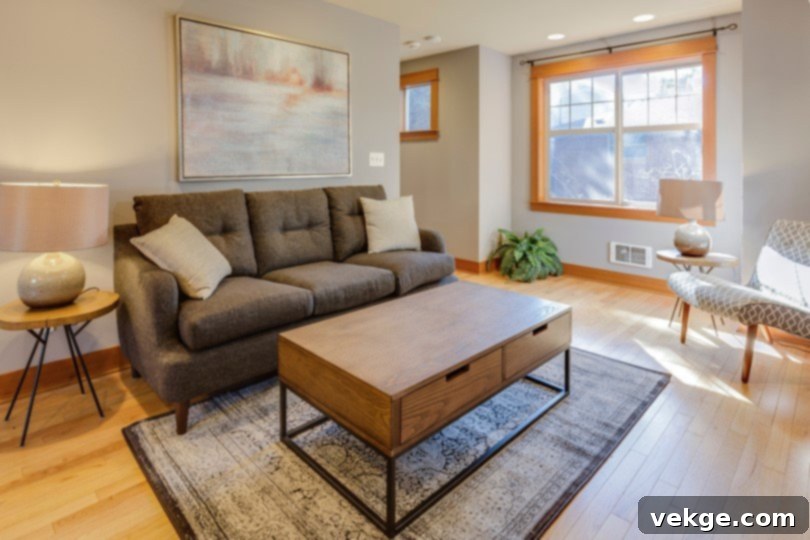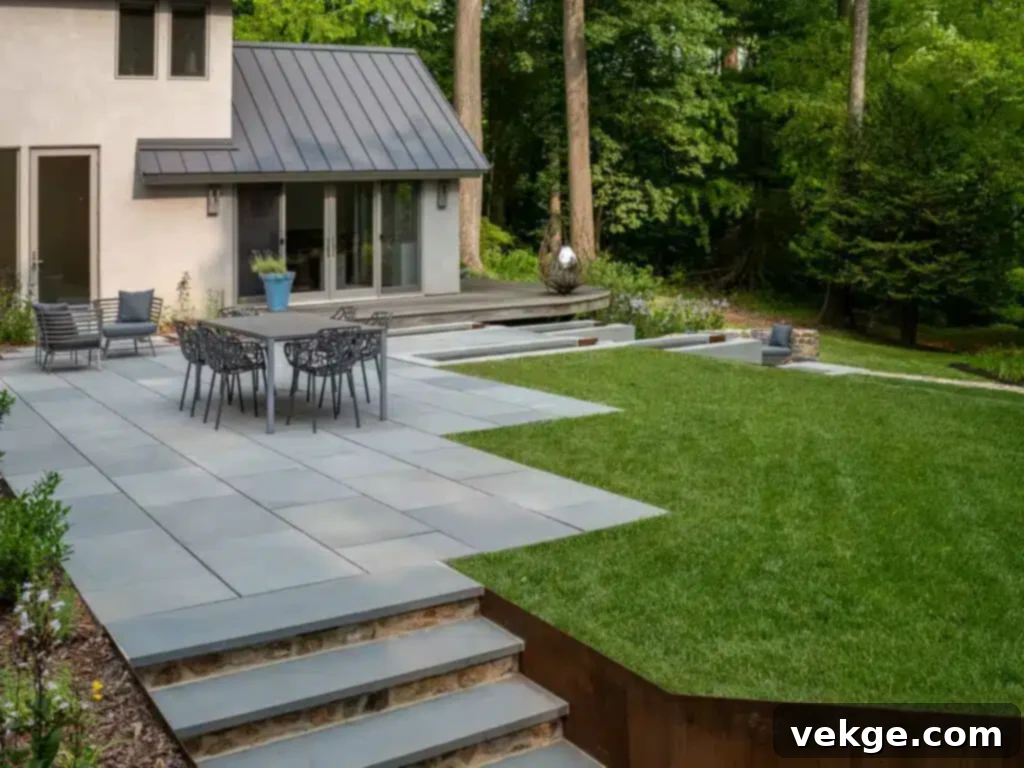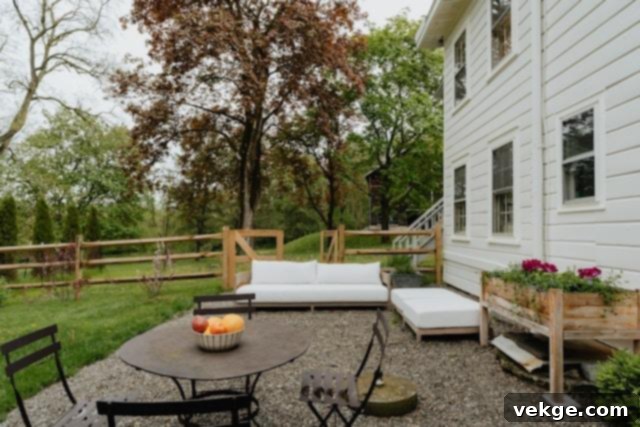Mastering Your Outdoor Oasis: Common Patio Design Mistakes to Avoid
Transforming your backyard into a functional and aesthetically pleasing outdoor living space is a dream for many homeowners. Unlike the clearly defined purposes of indoor rooms – dining in the dining room, sleeping in the bedroom – furnishing an outdoor patio presents a unique set of challenges and opportunities. Without clear guidelines, it’s easy to get carried away or overlook crucial details, leading to common patio design mistakes that can detract from your enjoyment and the overall value of your home.
Your personal style will undoubtedly play a significant role in the patio furniture and decor you choose. However, some fundamental principles and practical considerations should always guide your decisions. An outdoor space requires different considerations than an indoor one; for instance, using an old indoor sofa on your patio might seem like a cost-saving solution, but it’s a common misstep that can lead to rapid deterioration and an uninviting appearance. This guide will explore key areas where you can avoid typical mistakes, ensuring your outdoor patio furniture layout and overall design are both beautiful and enduring.
Too Little or Too Much Furniture: Finding the Perfect Balance

Achieving the right balance with patio furniture is paramount for creating an outdoor living area that is both practical and visually appealing. An insufficient number of pieces can limit your seating options, making the space feel sparse and uninviting, thereby hindering your ability to fully enjoy your outdoors. Conversely, an excess of furniture can lead to a cluttered and cramped patio, obstructing movement and creating an overwhelming atmosphere. The key lies in carefully planning your layout to optimize both comfort and functionality.
To craft a truly comfortable and inviting outdoor space, prioritize pieces that are specifically designed for outdoor use. Look for furniture that is weather-resistant, durable, and comfortable, ensuring it can withstand the elements while providing a cozy spot for relaxation. When selecting furniture from a provider like patio furniture Toronto, consider how individual pieces complement each other in style and scale. It’s crucial that the furniture fits well within the actual dimensions of your outdoor area, allowing for clear pathways and functional zones. Before purchasing, measure your patio and even tape out furniture footprints on the ground to visualize the layout. For those who prefer a more simplistic aesthetic, you can still introduce personality and warmth through carefully chosen accents like colorful cushions, strategically placed outdoor plants, or decorative pottery. These elements can add character without contributing to visual clutter, creating a cohesive and inviting environment.
Choosing the Incorrect Paving Material: A Foundation for Success
Selecting the ideal paving material is a foundational decision that significantly impacts your patio’s longevity, appearance, and overall functionality. The right material enables the construction of a strong, durable, and aesthetically pleasing patio that complements your home’s architecture and landscape. Unfortunately, many individuals make errors in this crucial choice, often overlooking that not all paving materials are suitable for every environment or design vision.
Several critical factors warrant thorough consideration. First, local weather patterns are paramount; materials must withstand temperature fluctuations, heavy rain, snow, and intense sunlight without degrading quickly. Second, consider the anticipated foot and vehicle traffic – a high-traffic area might require more robust materials than a decorative seating nook. Third, think about cleaning and upkeep requirements; some materials demand more maintenance than others to retain their appearance. For example, concrete offers versatility and is relatively cost-effective, but it can be prone to cracking over time and may require sealing to prevent stains. Interlocking pavers, on the other hand, provide excellent durability, easy repair, and a wide array of aesthetic options, though they might have a higher initial cost. Natural stone, such as flagstone or slate, offers a luxurious and unique look but can be more expensive and sometimes slippery when wet. Every aspect deserves careful attention when making this decision. If uncertainty looms or you lack expertise in material properties and installation, seeking advice from a professional landscaper or patio contractor is highly advisable to ensure you make an informed choice that will stand the test of time and enhance your outdoor patio aesthetic.
Not Cleaning, Maintaining, and Sealing: Protecting Your Investment

The beauty and integrity of your patio paving material are directly linked to its regular cleaning, maintenance, and sealing. When exposed to harsh weather conditions, UV radiation, dirt, and organic growth, your paving material can quickly darken, develop unsightly stains, and deteriorate. Many homeowners unfortunately overlook these vital steps, leading to a degraded patio aesthetic and a negative impact on the overall curb appeal of their home.
Even commonly used materials like concrete, often chosen for its durability and cost-effectiveness, are susceptible to wear and tear. Over time, cracks may form due to ground movement, freeze-thaw cycles, or heavy impact. Spills from food, drinks, or chemicals can leave stubborn stains or marks that are difficult to remove. To safeguard your patio floors and ensure their longevity, it’s essential to regularly clean and apply a suitable sealant or coating. This method effectively prevents the absorption of moisture and oils, significantly reducing the likelihood of scratches, cracks, and permanent stains.
Regular cleaning involves sweeping away debris, occasional power washing (using appropriate pressure for your material), and spot cleaning with suitable detergents to remove moss, mildew, and dirt buildup. Maintenance might include re-sanding between pavers to prevent weed growth and stabilize the surface. Sealing acts as a protective barrier; topical sealants create a film on the surface, enhancing color and providing stain resistance, while penetrating sealants sink into the material, offering protection without altering the surface appearance. By consistently taking these steps, your patio can maintain a fresh, new look and structural integrity for many years. Furthermore, numerous coating options are available in various colors and finishes, offering a unique opportunity to not only protect but also dramatically enhance the appearance of your outdoor space, allowing for personalized style and added visual interest.
Not Having a Sufficient Budget: A Costly Oversight
Many homeowners mistakenly view a patio as merely an added expense, rather than recognizing it as a valuable investment that significantly enhances their home’s functionality, aesthetic appeal, and resale value. While the raw materials for a basic patio can be relatively cost-effective, engaging a proficient contractor to meticulously design and actualize your vision – complete with proper site preparation, drainage, and quality installation – can result in a substantial, yet worthwhile, cost. Neglecting to budget appropriately for your patio project is a common and potentially costly oversight that can halt progress, force compromises on quality, or lead to an unfinished project.
A comprehensive patio budget should account for more than just the paving material. It needs to cover design fees (if hiring a professional landscape architect), site preparation (excavation, grading, base layers), the paving materials themselves, professional labor costs, necessary permits, and crucially, an allocation for the chosen patio furniture and accessories. Additionally, consider potential landscaping elements, lighting, and any desired features such as a fire pit, outdoor kitchen, or water feature. For instance, a well-planned budget can make incorporating desirable features like a custom-built fire pit or intricate, multi-zone lighting into your patio design feasible, turning a simple slab into a true outdoor oasis. Without adequate financial planning, you might find yourself cutting corners on essential elements like proper drainage or quality installation, which can lead to costly repairs down the line. It’s advisable to obtain multiple quotes, thoroughly understand what each quote includes, and allocate a contingency fund (typically 10-15% of the total budget) for unexpected issues. Viewing your patio as an investment rather than just an expense will encourage a more thorough and realistic budgeting process, ultimately leading to a more satisfying and durable outdoor space.
Lacking the Appropriate Amount of Space: Designing with Dimensions in Mind
While numerous patio design concepts are readily available, the most crucial starting point is accurately assessing the space you have. Patio sizes can vary significantly, and what works for one home might be entirely inappropriate for another. Some individuals prefer smaller, cozier patios that feel intimate and require fewer pieces of furniture to furnish, making them easier to maintain. Others might be constrained to a smaller patio due to limited yard space or specific property layouts.
Conversely, while a larger patio might seem appealing if you have the room, an excessively big patio could lead to vast, unused areas that feel empty and uninviting. This can also necessitate purchasing larger, more costly furniture to fill the space, or worse, leave large sections feeling barren and purposeless. It’s wise to plan the dimensions of your patio carefully before finalizing your decision. A practical approach is to mark out various patio sizes in your yard using stakes and string or even spray paint. Then, place your existing or planned furniture within these hypothetical boundaries to assess which size looks the best, provides adequate space for furniture and decor, and allows for comfortable traffic flow. Consider the different functions you envision for your patio – dining, lounging, grilling, a fire pit area – and ensure there’s enough room for each zone without feeling cramped or isolated. For smaller spaces, consider multi-functional furniture, vertical gardening, or built-in benches. For larger patios, think about creating distinct “rooms” or zones with rugs, planters, or low walls to give definition and purpose to the expansive area. The goal is to achieve a harmonious scale and proportion that maximizes functionality and comfort within your specific outdoor footprint.
Failing to Utilize Appropriate Lighting: Setting the Mood and Ensuring Safety
Many homes feature a single, often harsh, overhead light for the entire yard, which is typically intended for general illumination or security. While it might seem sufficient at first glance, relying solely on this type of lighting for your patio is a common mistake. Dedicated patio lighting is absolutely essential for creating ambiance, ensuring safety, and extending the usability of your outdoor space well into the evening. There’s a vast array of outdoor lighting options available, ranging from enchanting string lights and subtle path lights to practical solar-powered ground lights and sophisticated uplights for accentuating features.
The type and placement of lights you select can dramatically alter the mood and functionality of your outdoor area, so choose carefully. Ensure the area is well-lit for safe movement around furniture, steps, and pathways, preventing trips and falls. However, over-lighting can be just as problematic as under-lighting. A patio bathed in overly intense, bright light can feel harsh and unwelcoming, completely spoiling the relaxed atmosphere you might desire for enjoying summer nights by a fire pit or a quiet dinner. Aim for a balanced lighting scheme that incorporates different types of light for various purposes: ambient lighting for general illumination, task lighting for areas like grilling stations or outdoor kitchens, and accent lighting to highlight architectural features, plants, or decor. Opt for warmer light temperatures (around 2700K-3000K) whenever possible, as they create a more inviting and cozy atmosphere than cooler, bluish tones. Dimmers are also an excellent investment, allowing you to adjust the intensity of the light to suit different activities and moods throughout the evening. Thoughtful lighting design is not just about visibility; it’s about crafting an experience.
Not Using Decorations: Adding Personality and Warmth
A patio, even with the most perfectly chosen furniture and paving, can appear quite plain and utilitarian without the right accessories and decorations. It’s the thoughtful addition of decorative elements that truly transforms an outdoor space from merely functional to inviting, comfortable, and reflective of your personal style. Even something as seemingly small as an outdoor throw rug can instantly define a seating area, add warmth, and transform the space into a more welcoming outdoor “room.”
Consider enhancing the ambiance with a variety of outdoor-specific decorations. This could include a selection of vibrant or subtly patterned outdoor pillows and cushions that tie into a color scheme, an array of potted outdoor plants and flowers in interesting containers to bring life and color, or weather-resistant candles and lanterns for a soft, glowing light. Beyond textiles and greenery, think about incorporating outdoor art, unique sculptures, or even a small water feature to add an auditory dimension to your oasis. These are simple yet incredibly effective ways to spruce up the area without overdoing it. The key is to find a balance between adding decor and preventing the space from feeling cluttered or overwhelming. Start with a few key pieces that reflect your style and contribute to the overall theme you envision. Gradually introduce more elements if needed, ensuring each item serves a purpose, whether aesthetic or functional, and contributes to a cohesive design. The goal is to create an outdoor space that feels personal, comfortable, and truly an extension of your home’s interior.
Endnote: Crafting Your Perfect Outdoor Sanctuary
Investing in a patio and furnishing it for use is a significant commitment, one that promises to extend your living space and enhance your lifestyle. To ensure your investment is truly worthwhile and brings years of enjoyment, it’s crucial to actively avoid the common patio design pitfalls discussed here. Concentrate on creating an inviting, well-decorated, and suitably sized outdoor area that harmonizes with your home and natural surroundings. A key aspect of achieving this goal is ensuring your patio is finished with durable materials and proper construction to withstand the test of time and the elements, preventing damage and costly repairs that could detract from the overall appeal of the space.
By thoughtfully considering factors such as furniture scale, paving material choice, consistent maintenance, smart budgeting, optimal space utilization, effective lighting, and personalized decorations, you can transform your backyard into a cherished outdoor sanctuary. An outdoor oasis, meticulously designed and cared for, will not only provide a perfect setting for relaxation and entertainment but also significantly enhance your property’s value and curb appeal for years to come.
